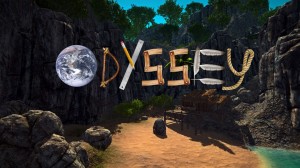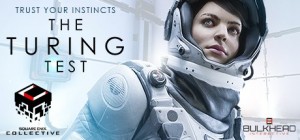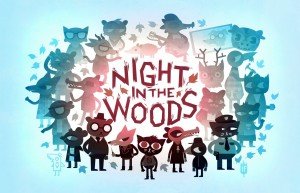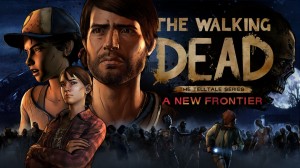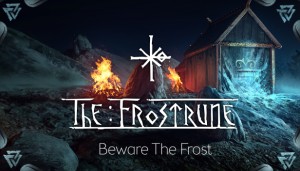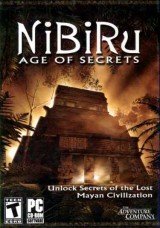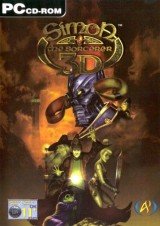Review for Four Last Things

Death. Judgement. Heaven. Hell. The Four Last Things, according to Christian theology. If you’re wondering exactly how one might make a comedic adventure out of a topic as heavy-sounding as this, look no further than the appropriately named Four Last Things, a Renaissance- and Monty Python-inspired point-and-click adventure by indie developer Joe Richardson that successfully marries a funny script with a unique art style and fun puzzles. While there are a few niggling points of annoyance, such as repetitive music and a vague solution here or there, this quirky little adventure is well worth checking out.
In Four Last Things, players take on the role of an unnamed drifter who has recently arrived in a medieval town to be absolved of his sins at the parish church. When he gets there, however, the priests have bad news. They cannot take his confession because he has not committed any sins in their parish, only in others. Luckily for him (and the player), there is a loophole to this inconvenient regulation: if he commits a slew of sins in their parish that cover the sins he’s committed elsewhere, they will be able to absolve him of all his sins retroactively. And so, armed with a Seven Deadly Sins checklist and wishes of “happy sinning” from the parish priests, he sets out on his quest.
Of course, sullying one’s virtues in the eyes of the Almighty isn’t a particularly simple matter in the world of Four Last Things. Conspiring with a greedy lawyer to take a sizeable cut of a family’s inheritance? First you need the right document from the clerk’s office. Looking to fulfill your lust after an attractive young lady? You’d better find a way to woo her, then. Indeed, with few exceptions, committing a particular sin requires completing a variety of preliminary activities, some nonsensical, others less so. You can complete the Sins in varying order (if not the preliminary tasks for each, which typically build on each other), so getting stuck trying to commit one Sin won’t prevent you from completing another.
Puzzles that you encounter generally involve saying the right thing to the right person, or finding and using the appropriate inventory item to complete an action. While they often have an element of absurdist humor to them, the solutions are generally logical and can be solved with a minimum of frustration. The solution for one of the Sins (sloth) is somewhat vague, and I happened to stumble on the answer by accident. Overall, though, I had little trouble progressing through the game. When you successfully commit one of the Seven Deadly Sins, a spinning wheel drops down from the top edge of the screen while ominous music plays, coming to rest on an image that indicates which of the Sins you’ve committed. It’s needlessly dramatic, but that’s the point, and it fits in with the silly style of humor on display throughout.
The absurdly comical premise, and the equally-ridiculous situations that arise from it, invite instant comparisons to Monty Python, and generally the game manages to live up to those comparisons. The script is genuinely funny, and much of the humor lies in the witty conversations and observations that occur between the protagonist and the other characters he meets, though sight gags are also common. For instance, asking the town blacksmith for help sharpening a particular implement opens up a variety of silly conversation options, including the offer of doing a “sexy” dance in exchange for the smith’s assistance. Not every dialogue choice is as outright zany as this one, but the game typically remains sarcastic and, occasionally, self-aware.
One aspect of note is that Four Last Things bucks the current trend of including multiple endings, and I have to say that here this choice works to the game’s benefit. Given that the entire premise is essentially a send-up of the strictures of religious bureaucracy and moralism, it seems to me that giving the player choices that might affect the ending would somewhat diminish this critique. That may not have been the practical reason for excluding multiple endings, but intended or not, it actually works in the plot’s favor.
Considering that Four Last Things is a one-man creation, the graphics are noteworthy. To overcome budget constraints, Richardson took a unique approach to the problem by using public domain paintings from Middle Age artists such as Hieronymus Bosch and Pieter Bruegel the Elder. Elements from a multitude of paintings are mixed and matched to create the environments, characters, and creatures that populate each scene, and the disparate parts blend together surprisingly well. The often surreal nature of the works from Bosch and his contemporaries, such as a floating cracked egg with musicians sitting inside it, fit right in with the humorous nature of the game, and are sometimes remarked upon by the characters for comedic effect.
Despite the static medium from which the settings are derived, custom animations, including pacing animals, dancing revelers, and even blinking eyes bring each scene to life. Pastoral valleys, back alleys, and even an art gallery are among the locations you will visit. In fact, the art gallery (which itself is a modified version of a painting by David Teniers the Younger) allows players to explore the various unaltered works that comprise the game’s visuals. The result is dazzling, and successfully proves that a little creativity can overcome financial limitations.
Aside from the main character’s shuffling footsteps, sound effects like the grinding of the smith’s wheel and the indiscernible babbling of a crowd are somewhat sparse, and more effects would have been welcome. As with the graphics, all of the music is either in the public domain or available for free, and is comprised of a collection of medieval and Renaissance-era pieces that fit perfectly with the atmosphere. Amusingly addressing the question of where such background music comes from, Four Last Things places a musician or band, taken from one of the source paintings, in each scene as though they are playing live. It’s a quirky touch that feels very in sync with the overall style of humor, and one that made me laugh out loud when I realized what was being implied. My only complaint is that each track is generally quite short and thus sometimes grated on my nerves if I spent much time in any one scene, or returned to the same place several times, which is an unfortunate blemish on the otherwise superb atmosphere.
The point-and-click controls are intuitive, utilizing the left mouse button for most actions. When clicking on an item or character, a set of icon bubbles appear, with an image denoting the action to perform, including “talk,” “touch/take,” and “look.” Double-clicking on terrain will change your gait to a brisk and visually-comedic run, making backtracking easier. The inventory is accessible from a bar that appears when moving the cursor to the top edge of the screen. While you have a basic “Seven Deadly Sins” checklist to keep track of your progress, the lack of a hint system isn’t really problematic. That’s not to say that you can’t be stumped as to what to do next, but the couple of times this happened to me, getting unstuck was generally a matter of thinking through the game’s logic and what it was expecting me to do.
The game saves automatically, with no manual ability to record your own progress, and checkpoints are based on completing an activity, rather than saving each time you move to a new location or quit the game. While this keeps you from losing your progress, it can be a little disconcerting when you continue where you left off, but in a different area. Luckily, it’s a simple matter to navigate back to any location you wish, since none of them are off-limits and the gameworld is relatively compact. Indeed, the game itself is fairly short, coming in at around 3-4 hours in length, but the brief experience is high-quality overall, and if anything could have been longer without wearing out its welcome.
Overall, Four Last Things is an impressive – and impressively funny – adventure that pulls off its Monty Python-esque humor with gusto. The sarcastic, witty script is laugh-out-loud funny, and despite one or two missteps the often silly puzzles are simple but enjoyable to solve. While the music could have been less repetitive, the late medieval-era soundtrack is perfect accompaniment to the gameplay. A collage of mixed-and-matched elements from famous historical paintings, the unique art style stands out as a creative way to work around budgetary constraints while keeping with the Renaissance-inspired atmosphere. If you’re even a casual fan of Monty Python’s brand of humor, or of absurdist humor in general, Four Last Things should be first on your ‘buy’ list.
Our Verdict:
This Monty Python-inspired puzzler has a great sense of humor, generally fun puzzles, and a clever collage presentation. If you’re a fan of absurdist send-ups of religion, Four Last Things should be number one on your list of games to play next.








